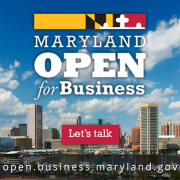Blind Don’t Have a Seat at Driverless Planning Table – Advocate
Burney Simpson
The blind and others with disabilities are being shut out as self-driving vehicle developers like Google design the car interior and interface with users, the president of the National Federation of the Blind said this week.
Instead, it appears as if the developers intend to unveil the completed product and just move on, said Mark Riccobono at the Federation’s Baltimore headquarters.
“Google says they are still developing the inside of its car. But they want to be done by 2020. That’s soon,” said Riccobono. “My fear is we come to that end and they say ‘What do you think?’ We think we should provide input now.”
The blind should be part of a group “that forges what the interface looks like. These vehicles present an opportunity for everybody, not a select few,” Riccobono said.
There were more than 7.3 million U.S. adults with visual disabilities in 2013, according to the Federation.
Google has said its self-driving cars could provide mobility to millions of people with disabilities who now rely on public transit or friends and relatives to get them around.
One of the first non-Googlites to ‘drive’ the test Koala car was Steve Mahan, a blind man from Morgan Hill, Calif. A Google video of Mahan’s ride around town in 2012 has had nearly 7.6 million views on YouTube.
Riccobono spoke Wednesday to Maryland’s Autonomous and Connected Vehicle Working Group as it plans policy recommendations for the operation of the vehicles in the state. The Federation hosted the group.
BLIND DRIVER CHALLENGE
Riccobono has some driving experience even though he was declared legally blind when he was five.
In 2011, he completed the Blind Driver Challenge at the Daytona International Speedway (click for video) in Florida driving a Ford Escape. He drove the 3.6 mile course solo, turning the SUV, switching lanes, avoiding obstacles placed in the road, and passing another vehicle.
The Escape was equipped with sensors and other self-driving technology. Riccobono used a tactile signaling system that the Federation designed with the Robotics and Mechanisms Laboratory (RoMeLa) at Virginia Tech in Blacksburg, Va.
Riccobono wore gloves that sent vibrating signals to his right or left hand to indicate steering direction and the degree of a turn. His seat cushion vibrated at different levels to suggest accelerating or braking.
Riccobono said he never considered that the blind could drive until he learned about the autonomous technology being developed out of DARPA challenges a decade ago. The Federation began researching the idea and eventually partnered with VaTech.
The National Federation of the Blind is a 76-year-old not-for-profit with chapters in 50 states, Puerto Rico and Washington, D.C. It operates training and service programs, provides scholarships, advocates on Capitol Hill and at the state level, and offers an audio news service. The Federation claims about 50,000 active members, according to Wikipedia.
Maryland’s autonomous vehicle working group includes representatives from the Maryland Department of Transportation and its divisions, state police, various agencies sure to be impacted by self-driving vehicles, trade organizations from the auto OEMs and trucking groups, and others.
It plans to present its recommendations to the state’s Secretary of Transportation Pete Rahn before the next session of the Maryland legislature in January, 2017.
MDOT formed the Working Group when the state legislature twice shot down proposals to create and fund its own working group.
Photo from Google video of blind driver test. Photo of tactile equipment at Blind Driver Challenge by National Federation of the Blind Kentucky chapter.

